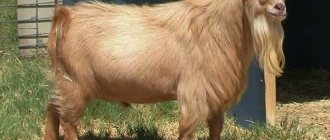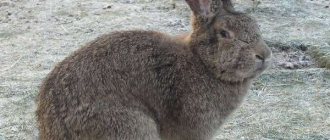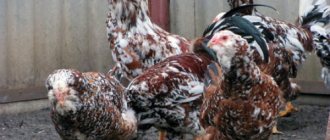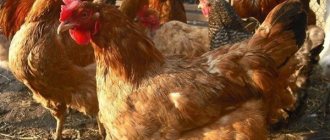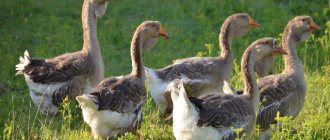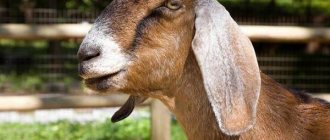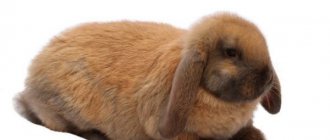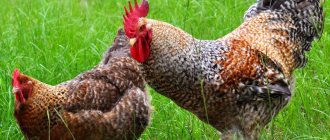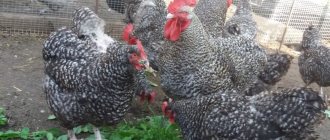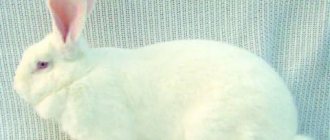History and origin
It is believed that Alpine goats originate from the French historical region of Savoy, located at the foot of the Alps and partly directly in the Alps. But this area simultaneously connects the borders of three states - France, Italy and Switzerland, which is why some scientists are convinced that Swiss breeders also made a significant contribution to the breeding of the breed.
Since the beginning of the 20th century, French farmers began to actively breed the breed. There is a version that before this the breed was cultivated only in the Savoy region, or in the adjacent cantons of Switzerland. It was only in 1930 that the first breeding book of the Alpine goat was created in France, where the external and productive qualities of the animal were described. But ten years earlier, the first 22 goats came to North America, where, on their basis, it was possible to develop an American intrabreed type. All Alpine goats raised in the United States today are thought to be descendants of these 22 individuals.
Over the next decades, Alpine goats became popular in Europe and North America. Today, breeding animals make up more than 90% of the goat population.
Alpine goats in Russia
Alpine goats have become famous in Russia due to their high productive qualities and unpretentiousness to living conditions. With a minimal investment in the business, the farmer will be able to make a good profit when selling dairy and meat products.
You need to be careful when purchasing an animal, having first found a nursery or farm with positive reviews. It will also be necessary to taste the milk, assess the general condition of the farm, study the living conditions and the number of livestock.
Alpine goats: description of the breed and care features, reviews from owners
Alpine goats are distinguished by high adaptive abilities, able to survive in the most unfavorable conditions and at the same time maintain their productivity. This feature has made them popular among breeders.
Origin story
The first ancestors of the Alpine goat lived in the provincial town of Savoy in France. At this point the borders of 3 states converge:
- France;
- Switzerland;
- Italy.
This does not make it possible to accurately confirm the origin of the breed. Its second name is chamois. 98% of the breeds bred in France are chamois. There were many colors in the primary population. Their main diet was pasture, which the animals obtained in mountainous areas, which made them less susceptible to wind and cold.
Important! Since the twentieth century, Savoyard farmers began to actively breed animals. The first stud book describing the species data was created in 1930, which is considered to be the official date of the appearance of the breed.
Appearance
It is difficult to give a general description of the variety. Within the species there are 2 subtypes:
- French;
- American.
There are also several color variations:
- motley;
- light neck;
- chamois;
- two-color;
- interspersed;
- bay;
- regular;
- black-necked
Goats have short hair with a thick undercoat and cannot be used for human purposes. The legs are well built, strong and long. The goat's muzzle is long, elongated, slightly flattened. The ears are straight and straight. Check out the following goat breeds: Saanen and Nubian.
Farmers value Alpine goats for their simple, easy-going nature. Animals are happy to make contact with humans and are unpretentious to their living conditions. Unlike other species, they do not need constant supervision and quickly remember the way home.
Breed standard
The breed standard, which one is guided by when selecting a high-quality individual, is shown in the table:
| Appearance | Standard |
| Head | Long, flat |
| Horns | Strong, flat, hollow |
| Average height at the withers of a goat (cm) | 85–90 |
| Average height at the withers of a goat (cm) | 70–80 |
| Neck | Middle length |
| Breast | Slightly protruding, rounded |
| Stomach | Rounded |
| Legs | Tall, strong, with sensitive hooves. |
Productive qualities
The Alpine breed of goats was among the top three in terms of milk yield. The average annual milk production is 700–800 liters. Otherwise, how much milk an individual produces depends on the conditions of detention and feeding ration. The most productive goats can produce up to 1200 liters per year.
The dairy products of Alpine goats are completely odorless, which makes them resemble those of cows. fat is 3.7%, protein - 3.2%. The breed has a pronounced dairy orientation. The meat yield from an adult carcass is only 45%, i.e. an average of 10 kg.
Alpine goats are very prolific. Even a firstborn gives birth to 2 kids. On average, an adult female gives birth to 3–4 babies during one pregnancy.
Advantages and disadvantages:
Pros:
- high adaptive abilities;
- good exterior;
- endurance;
- unpretentiousness in care and diet;
- fertility;
- high milk yield;
- balanced character;
- long-term preservation of genetic data and productivity;
- the ability to use a variety to preserve and improve the genetic characteristics of other breeds.
Minuses
- react poorly to poor quality water;
- unproductive in meat production;
- high price.
Breeding Features
Alpieks are often crossed with other breeds, and the results are often positive. Females reach sexual maturity at 7–8 months, but they begin to mate with males after reaching 1.5 years. Gestation of kids lasts 5.5 months.
Childbirth usually occurs without complications. The animal does not need human help. The survival rate of young animals is 90%. Alpine goats are distinguished by a well-developed maternal instinct and high milk production, which allows them to independently feed their offspring. Already from the second birth, females give birth to 4–5 kids.
Conditions of detention
The advantage of breeding these animals is that they do not need to build permanent housing. One individual will need 3–4 sq. m. To maintain milk production throughout the winter period, you need to take care of insulating the premises. Don't forget about basic hygiene rules:
- the ability to properly ventilate the room;
- cleaning the shed once a week;
- constantly clean and dry bedding.
Males are kept in separate stalls from females and kids. The weak point of alpine individuals is their hooves. In the goat shed it is necessary to make a floor from boards, first raising it to a height of 20 cm, and cover it with a bedding of straw or hay.
Important! Goats of this breed are accustomed to spending the night on elevated surfaces. The goat shed should be equipped with wooden shelves at a height of 50–60 cm from the floor.
Feeding
The basis of the winter diet is high-quality hay, which can be given in unlimited quantities. At the end of the grazing season, you should stock up on grains and vegetables. The grain is steamed and boiled vegetables are added to it. With the onset of warm weather, the goats are transferred to pasture.
Watering
Particular attention should be paid to water. Alpine women are very picky in this matter. If the drinking bowl is dirty, the animal will not touch the water. You need to wash drinking bowls with a non-aggressive detergent once a day. A more convenient option is to build a nipple drinker on the site and in the pens.
Grazing
Grazing for alpines is required. They prefer dry food rich in fiber, so even in a green meadow they will try to find just such food. Accordingly, you will have to find them a suitable pasture or build a walking area next to the goat's rue and provide the animals with the necessary feed.
Alpine goats in Russia
During Soviet times, it was prohibited to import these goats into Russia. After the collapse of the USSR, breeders began to purchase the Saanen breed, which was popular at that time. The potential of the breed is simply ignored, although it is obvious that this variety is best suited for breeding in any region of the Russian Federation.
The high cost of a purebred individual is compensated by the ability to preserve its genetic and productive characteristics in several generations, even with interbreeding.
The Alpine goat breed is an unpretentious, highly productive variety of dairy goats. It is not widespread in Russia; it is better known among farmers in France. The breed adapts well to any climatic conditions, which gives good prospects for breeding anywhere in the world.
Source: https://fermer.blog/bok/zhivotnye/kozy/porody-koz/716-alpiyskaya-poroda-koz.html
Characteristics and exterior
Most often in Russia there are Alpine goats that correspond to the American and French descriptions of the breed. Animals have a proportional body, elongated, narrow with a strong skeleton. The body is supported on short, stable legs with marked withers. Goats have a prominent spine and a voluminous, deep chest. The weight of the female varies between 60-63 kg, the weight at the withers reaches 75-85 cm. The weight of the male is 75-78 kg, height 80-90 cm.
Alpine goats have a straight back with a sloping, narrow and short croup, a voluminous udder with regularly shaped teats. The animals have a small head located on a short neck. Goats have a flattened muzzle and erect, short ears. On the head there are hard, short, oval horns, set vertically and curved towards the back. The tail of Alpine goats is long with wool, and the hooves are massive. The body is covered with short, smooth hair.
The color of Alpine goats is varied; one litter can contain white, gray, and brown kids. Standards from different countries describe several options for basic colors:
- Kunavar. The goat's front part is black and the back part is white.
- White neck. Such specimens are most often found in Russia. Goats have white necks and shoulders. Black or gray hair is present on the main body and head. A characteristic feature is a dark or black stripe running along the outside of the legs from the knees to the hooves.
- Paid. These are animals with a motley or spotted color.
- Red neck. The shade from the neck and shoulders from brownish-red smoothly passes to the croup in black or dark brown color.
- Sandgou. There are white markings on the main black background.
- Bay or chamois. The main shade is red, brick or ocher. The head and neck are covered with black markings. Legs black. There is a dark stripe along the ridge.
- Magpie or magpie. Animals with this color have a white head, and on the main background there are colored markings.
There are many more color variations, where there are one, two, three colors.
About the character of the animal
Alpine goats have a calm disposition. These are independent, good-natured animals, thanks to which the breeder does not particularly need to interfere with their way of life. Goats get along well with other animals, including goats of other breeds. But in this case it is necessary that the “neighbors” are not aggressive.
Alpines are active, hardy animals that can travel long distances in search of food. Goats like to run around in the pasture and frolic. These qualities save them from problems such as obesity.
Afterword
Exterior and offspring are not very important for creating a dairy farm. But milk yield indicators. The birth of healthy young animals capable of further reproduction without pathologies are the main conditions for the effectiveness of farming. The Alpine breed of goats is successful in all respects.
In Russia, Ukraine and Kazakhstan, the species is gaining popularity. Soon the cost of one animal will not amount to exorbitant prices. And there will be a breakthrough in the production of dairy and cheese products. Since the amount of milk obtained exceeds that of other breeds of goats and cows.
What is the productivity of goats?
Alpine goats are a dairy breed group. Animals are valued for their high milk yield, the absence of an unpleasant odor in milk, a long lactation period, high quality dairy products, and easy milking.
During the year, one female produces about one and a half tons of dairy products per year. The maximum milk yield per year for record-breaking animals is 2.2 tons. The average daily productivity is 4.5 liters. Milk is characterized by a high nutrient content: 3.5% fat, 3.1% protein.
Dairy products have a predominant sweetish taste, which is why it is allowed to be used for baby food. Cheese and cottage cheese are also made from milk at home.
Price overview
Breeding alpine artiodactyls is a profitable business, since in addition to milk, they produce high meat productivity with proper maintenance, as well as large offspring. Females are able to bear offspring from 6 months. If 1-2 kids are born on the first goat, then the second time you can get offspring of 4 or more kids.
The sale of kids and adults is in demand in all corners of the planet. The price for one adult dairy animal starts on average from 30,000 rubles, which can be raised during bargaining. The cost of an Alpine sire goat starts from 15,000 rubles. Kids can be purchased from 5,000 - 15,000 rubles.
Conditions of detention
Although Alpine goats can withstand cold climates well, in winter it is recommended to keep them in an insulated room, which will not reduce the productivity of the animals. The air humidity in the room is kept at 40-60%. One goat accounts for 4 sq. m area. For a female with offspring, a stall must be fenced.
It is equally important to keep the room clean; it should be dry and the floors should be insulated, because the weak point of goats is their legs. It will be possible to provide greater comfort if you nail beds at a low height where animals can climb. Alpine goats do not have a specific odor, but it is better to keep breeding goats in a separate room.
In summer, it is advisable to let goats out to roam in pastures. But if this is not possible, it is allowed to feed animals with fresh herbs in the barn.
Subtleties of content
It is known that the ancestors of Alpine goats lived in mountainous areas and adapted to all difficult living conditions. These breeding animals are capable of staying on alpine pastures for up to 6 months. At the same time, they can get their own food in rocky gorges and drink cold water from mountain streams. Due to such harsh environmental conditions, productivity is minimal.
Premises requirements
There are practically no essential requirements for the premises in which pets will be kept. All that is needed to create comfortable living conditions for animals is cleanliness and a large amount of free space in the room, be it a barn or a stable. You should also ensure the required level of lighting in the room.
It is recommended to allocate an area of 2.5 square meters per alpine. Under no circumstances should the barn be allowed to become damp. This can harm the animals' already weak hooves. Goats can tolerate frost, but not dampness. To avoid this, it is advisable to raise the floor at least 15 centimeters from ground level.
It is recommended to make the flooring from wooden material.
It is worth saying that Alpine goats do not tolerate drafts very well, so in the process of preparing the barn, due attention should be given to this issue. You should get rid of all the cracks in the room
Otherwise, the animals may get sick. This often manifests itself as a severe cough. Also, in such conditions, animals can get pneumonia.
Insulation is not mandatory for the premises in which goats are kept, but in some cases the barn is lined with mineral wool. Another important component for creating normal living conditions is the presence of ventilation. To ensure normal air filtration in the barn, two dormer windows are created in the wall at the top and bottom.
Feeding
It is recommended to use pasture for feeding domestic goats. They include tree branches, meadow grasses, and shrubs. Hay is a key component in the alpine diet. Farmers often point out that Alpine goats have a greater preference for dry feed rather than lush pasture grass.
This does not mean at all that the diet should consist exclusively of the animal’s priority product; it should be rich.
- It is recommended to add various cereal products to the daily diet of goats;
- Animals eat hay all year round;
- In winter, it is recommended to add concentrated feed elements to the food of mountain goats; 200 grams per day will be quite enough;
- per year, one goat requires at least 55 bags of hay, the volume of each of which is 50 kilograms;
- in pastures and in the stable you need to keep salt for animals;
- To boost immunity, many owners give their alpines water diluted with jam - this procedure should be carried out in late autumn or early spring.
Watering
Alpine goats are very picky about water quality, so watering the animals requires special attention. It is necessary to wash the water container every day - animals will not drink from a dirty drinking bowl. In this case, the detergent should not be aggressive. To make life easier for both themselves and their animals, farmers often resort to installing a nipple drinker.
Grazing
Grazing is an integral part of the Alpine goat's day. You should find a suitable pasture for the animals; it must be dominated by dry pasture.
You can arrange an area near the barn specifically for walking animals.
Feeding
In the summer, goats walk on pasture, and pasture is considered the ideal food for them. During this time, Alpine goats should be fed green food and sometimes given food scraps. If the farmer grows vegetables and other plants, it is quite acceptable to feed the animals with weeds. Goats are prone to chewing tree branches. Experienced livestock breeders recommend including table salt in the diet - in the wild, goats look for it on the rocks.
In winter, goats of this breed are given hay. Animals enjoy consuming vegetables and root crops. Also, during the cold period, mineral supplements and chalk should be present in the diet. It is recommended to give food three times a day at the same time. First, goats are fed with combined feed, then with succulent feed, then with roughage. It is permissible to mix the feed with thick or thin porridge, but do not brew it with boiling water, otherwise the feed will lose all the necessary vitamins and healthy additives.
The livestock breeder must include combined and concentrated feed and grains in the diet. Change the water as often as possible so that it is always clean and fresh - this directly affects the quality of milking. Containers for food and drink should always be clean.
The farmer needs to carefully monitor his diet. Alpine goats are prohibited from feeding birch branches, as they can cause the development of various diseases. It is important to feed pregnant females in a balanced manner, because nutrition is the key to good and healthy offspring.
Appearance
It is difficult to give a general description of the variety. Within the species there are 2 subtypes:
- French;
- American.
There are also several color variations:
- motley;
- light neck;
- chamois;
- two-color;
- interspersed;
- bay;
- regular;
- black-necked
Goats have short hair with a thick undercoat and cannot be used for human purposes. The legs are well built, strong and long. The goat's muzzle is long, elongated, slightly flattened. The ears are straight and straight.
Check out the following goat breeds: Saanen and Nubian.
Farmers value Alpine goats for their simple, easy-going nature. Animals are happy to make contact with humans and are unpretentious to their living conditions. Unlike other species, they do not need constant supervision and quickly remember the way home.
Breed standard
The breed standard, which one is guided by when selecting a high-quality individual, is shown in the table:
| Appearance | Standard |
| Head | Long, flat |
| Horns | Strong, flat, hollow |
| Average height at the withers of a goat (cm) | 85–90 |
| Average height at the withers of a goat (cm) | 70–80 |
| Neck | Middle length |
| Breast | Slightly protruding, rounded |
| Stomach | Rounded |
| Legs | Tall, strong, with sensitive hooves. |
Breeding
The advantage of this breed is that it is not necessary for a person to be present during childbirth - goats give birth to offspring without any difficulties. If you cross an animal with goats of other breeds, you can get strong, hardy kids with excellent performance in the future and with a special color. The goat feeds and raises the kids on its own.
Pregnancy and lambing
Pregnancy in Alpine goats lasts about 5 months (145-155 days). A month and a half before birth, in order to ensure intensive nutrition of the fetus, the goat stops milking. 10-15 days before the kids appear, the farmer will need to treat the birthing area with 5% creolin or milk of lime. The barn is also covered with straw and protected from drafts. It is allowed to let pregnant goats out into a fenced range in good weather.
Before lambing, a pregnant goat begins to behave restlessly, often lies down and jumps up, and bleats pitifully. A noticeably enlarged udder indicates the approaching birth. Lambing happens quickly and easily. The second and subsequent kids are born immediately after the first baby appears or with a short break.
Caring for young animals
A newborn goat needs to clear mucus from its sinuses, mouth, and eyes, then place it next to its mother so that she can lick it or wipe it off with clean napkins. The goat's umbilical cord is cut, the tip is lubricated with iodine, and placed on a warm, dry bedding in the same stall as the goat.
After giving birth, it is necessary to milk Alpine goats to avoid the inflammatory process. 1-1.5 hours after the appearance of the last kid, warm water is poured into the goat. In the first days, the mother goat is fed exclusively with high-quality hay, warm mash of bran or flour, and fresh grass. After three days, it is allowed to diversify the diet with silage, root vegetables, and bran. For the first three days, goats are milked 4 times a day before feeding the kids. In the 2nd month, goats are milked three times a day.
After birth, goat kids are viable and rarely get sick. The survival rate of young Alpine goats is high. Alpine goats are good mothers, caring for their offspring.
How and what to feed goats correctly?
In winter, the basis of nutrition is hay. In spring, summer and early autumn, they give green food, while coarse green food (old grass, leaves, twigs) is preferable for them; they practically do not eat fresh grass. As a rule, animals get their own green food during walks; there is no need to give it additionally, but there should always be plenty of hay in the stall - this is the responsibility of the breeder.
Feeding Alpine goats
In separate troughs you need to give grain mixtures, concentrated feed, root vegetables, vegetables with added vitamins, chalk, and salt.
One of the main features of the species is sensitivity to water. Perhaps the reason is the mountainous origin of the animal, but the individual will never touch dirty water. Therefore, the water in drinking bowls must be changed several times a day.
Diseases and their prevention
Alpine goats are valued for their good health and increased resistance to various diseases. Although they rarely get sick, they may encounter the following underlying diseases:
- moniesiosis;
- anthrax;
- bruises, wounds, injuries;
- coenurosis;
- tympany;
- fascileosis;
- inflammation of the bronchi of the lungs;
- dermatitis, scabies;
- brucellosis;
- anaerobic dysentery in young animals or diarrhea in kids;
- bradzot;
- paratyphoid;
- enterotoxemia;
- infectious mastitis;
- hoof
The acute form of the disease is accompanied by an increase in temperature - more than 39.5 degrees. Usually, goats lose their appetite and their breathing quickens. Sick goats must be isolated and a veterinarian called. Animal vaccination will help prevent anthrax, smallpox, and foot-and-mouth disease. It is important to promptly disinfect the premises and monitor the cleanliness of drinking bowls and equipment.
Where can I buy?
In Russia there are no state breeding breeders for the Alpine goat breed. All representatives of the breed are kept in private farms. Breeding books and records are kept by enthusiastic goat breeders. When purchasing a purebred animal, it is recommended to visit the breeders you like, inspect the herd and the conditions in which the goats are kept. It is advisable to try the taste of the product, only after that make a purchasing decision.
Purebred goats are purchased not for the sake of their beautiful appearance, but because of the high productive indicators inherent in the chosen breed. It is very difficult to buy purebred Alpine goats in Russia. Females are capable of transmitting color to their offspring, due to which many unscrupulous farmers make money from this by crossing ordinary goats with a purebred male, and passing off the offspring as purebred kids.
Also, dishonest livestock breeders can crossbreed close relatives, which negatively affects the offspring. Those who purchase such animals end up complaining about the unpleasant taste of milk and small volumes of milk yield.
There are some factors to consider when purchasing an animal:
- The presence of many kids of different ages in a herd indicates that the goat is often covered, which can negatively affect the health of the animal. Conscientious farms ensure that purebred goats are mated once a year.
- When there is no milk for sale on a farm, it is worth considering. This is often an indicator of low-quality dairy products.
- When keeping purebred and outbred goats on the farm, the buyer should clarify “for what?” After all, it makes no sense to keep outbred goats that practically do not produce milk, but need decent nutrition.
- Real breeders of breeding animals will always have answers to all your questions, they themselves will tell you everything about their pets, because they are proud of it. Unscrupulous breeders, on the contrary, will avoid questions, citing being too busy.
Many farmers know that a real purebred Alpine goat is expensive. If an animal is ready to be sold at half the price, future owners should be wary. Pedigree breeding requires considerable financial investments: purchasing animals, keeping and caring for them, feeding them food, veterinary examinations, vaccinations, etc.
Description of the breed
Russian farmers prefer to breed goats because of their unusual color, pleasant-tasting milk, good adaptability to any living conditions and friendly character. Breed characteristics (usually variegated colors or colors in several tones) are passed on even after many generations. Typically, the Alpine goat looks like this: a white neck, dark gray shoulders, or a reddish coloring that turns brown as it moves to the shoulders.
The body is large, the head is small, the ears are straight, with well-defined withers. The tail is long. The neck is not long, thin, the narrow sacrum is slightly lowered. The coat is short in summer with lengthening at the ridge. The main feature of the Alpine goat is a long lactation period and a voluminous udder. The horns are oval and flat; sometimes you can find hornless individuals. Goat hooves are hard to the touch, but elastic inside.
Alpines are quite hardy animals. When cold weather sets in, you can notice a light fluff on the goat’s body, which completely subsides by summer. This is why cold winters can be tolerated easily by goats. The breed is low maintenance, which helps it adapt to any weather and any diet. By nature, goats are peaceful and quiet, they love their owners and treat them well. They become leaders in the herd.
| Floor | Weight, kg | Height, cm |
| Female | 60 | 85 |
| Male | 78 | 90 |
Alpine goat
There are about seven main types of alpine colors, but the most common are the variegated color, as well as the color with a light neck.
Popularity of the breed in Russia
The Alpine breed is popular in Russia due to its high productivity and unpretentiousness to living conditions. With little cash outlay, you can earn good income by selling dairy and meat products. If you are thinking about purchasing an Alpine goat, carefully study all your options, find a good farm and visit it in person.
Unfortunately, a pure breed is not so easy to find in our country. Alpine females pass on their color to their offspring, which is why many careless goat owners make money from this. They cross ordinary goats with a purebred goat and pass off the offspring as purebred kids. Also, dishonest livestock breeders can crossbreed close relatives, which also adversely affects the offspring. People who buy such kids end up dissatisfied with the taste of the milk and the size of the milk yield.
Therefore, it is necessary to carefully approach the issue of searching for a farm or nursery to select a purebred goat. Be sure to try the milk, evaluate the general condition of the farm, study the living conditions and the number of livestock. Only after these events purchase an Alpine goat. Remember: you buy an animal not for the sake of an interesting look, but for the sake of good milk, healthy offspring and stable milk yield.
Alpine goat milk is highly valued by livestock farmers
Prices for milking machines for goats
Goat milking machine
Productivity of Alpine goats
Alpine goats have gained such popularity also because they have excellent milk production. If you properly care for the female, she can produce up to 1 ton of milk per year (fat content from 3 to 3.3%). Lactation lasts a long time, from one to three years, and the goat milks easily. You can make cottage cheese and cheese from the product. Milk does not have a specific smell (if the goat is a pure breed) and is ideal for baby food. The taste is sweetish, creamy, the consistency is dense.
Meat productivity is not a distinctive feature of Alpine goats. Many farmers call the meat satisfactory. By adulthood, the female gains an average weight of 60 kilograms, the male - 78. Alpine goats are also used to supply meat, but the most valuable resource is milk. Wool is a decoration and protection from the cold. It is short and smooth, so you won’t be able to make a good thread out of it or knit anything.
Alpines have several main varieties. These are British, Swiss, French Alpine goats and Rock goats.
Alpine goats
Advantages and disadvantages of the breed
The Alpine goat breed has a lot of advantages, because of which it is chosen by farmers around the world:
- good adaptability to any weather conditions;
- kind, good and friendly character towards the owner;
- excellent fertility;
- milk has a pleasant taste, without a characteristic odor;
- good endurance, no dependence on the owner.
The list of advantages is impressive, but sometimes the breed is not so easy to handle. Any goats need proper care, which can be complicated due to the following disadvantages:
- animals cannot tolerate drafts;
- goats are selfish in the herd, each strives to take a leading position;
- The alpine is very picky about the quality of water; she will not drink even slightly dirty liquid.
The Alpine goat has high endurance
Advantages and disadvantages of the Alpine goat
Alpine goats have many advantages. First of all, the animal is common in France, where industrial goat breeding is quite well developed. The main advantages of goats, for which farmers value them, are:
- Calm disposition. Almost all breeders involved in breeding this breed claim that the animals have a peaceful, friendly character. Goats are obedient, do not cause harm, and do not create any problems for the owner.
- Cold tolerance. Due to the fact that the Alpine goat comes from the mountainous Alpine region, it is initially adapted to life in harsh climates. This allows you to breed animals in any mountainous area, in the northern regions, where goats of another breed can freeze.
- High milk yield. The Alpine goat produces good amounts of nutrient-rich dairy products. With an average lactation rate of 800 liters, the breed is excellent for industrial dairy farming.
But this breed also has several significant disadvantages, which should be taken into account before breeding:
- High price. Alpine goats are not yet so popular in Russia, which is why the cost of young animals in nurseries simply goes through the roof.
- Sensitivity to water quality. This feature of goats of this breed requires the owner to be attentive and responsible.
Alpine goat breed: general characteristics
There are two types, American and French, and several color variations of the breed. Goats come in black, brown or white, and are either tri-colored or bi-colored.
Alpine goat, its description is very artistic. All colors are divided into 8 types, the most popular are “serena”, light neck and motley. “Chamois interspersed” and “two-color chamois” are somewhat less common.” The common chamois or bay are most widespread in France, while in the USA the motley and black-necked ones are most common.
Despite all the variety, goat hair is quite short and is not used as a by-product.
Representatives have thin graceful legs, but at the same time quite strong. The muzzle is straight and long, erect and narrow ears, next to which are flat, strong horns. The average height of goats is about 87 cm at the withers, and that of goats is 75 cm. Weight is about 80 and 60 kg.
All farmers in reviews of Alpine goats note their docile nature
In addition, this breed easily adapts to any living conditions and does not require human attention every minute.
Breed productivity
The Alpine breed makes up the top three most productive domestic breeds, along with the Saanen and Toggenburg. The average milk yield, according to French data, is 800 liters per year, and the best representatives produce up to a thousand liters.
Milk has average protein and fat content. At the same time, the Alpine goat produces milk that is completely devoid of goat smell, which is why it cannot be distinguished from cow milk.
The breed has a dairy focus, so there is no need to talk about high meat productivity.
One animal produces less than 10 kg of meat; adult animals produce 2 times more, but due to age, the cost of the product is higher.
As for fertility, milking individuals perform very well. On average, a female gives birth to 3-4 kids per pregnancy.
Maintenance and breeding
The breed is relatively undemanding to living conditions. Any shed of the appropriate size will be suitable for goats. There is a minimum of 4 square meters per goat.
You should not forget about the rules for keeping livestock. The barn should be bright, well ventilated and dry. Young animals and female goats should be kept separately from female goats.
The main advantage among the characteristics of alpines is its adaptability to cold, grafted on in mountain climates. The dense undercoat protects the skin from frost. Therefore, heating is not needed in the barn even in the harshest winter.
Hooves are the only weak point of goats. To avoid problems, it is necessary to install a plank floor in the goat shed
And it is important to raise it above the ground by 15 cm
Plank shelves should be built at a height of half a meter from the floor. Goats love to climb to such heights and sleep there.
There are no special requirements regarding diet. In the summer, purebred Alpine goats can get by on pasture feed. But to increase milk production, it is recommended to feed animals with vegetables and add minerals and vitamins.
In winter, alpine food is based on vegetables, root crops, and hay harvested in the fall. At this time of year, it is advisable to feed the animal with concentrated feed, and do not forget about minerals and vitamins.
The Alpine breed, being omnivorous in terms of food, is picky about drinking water. If the drinking bowl is very dirty, the goat will not touch the water, even if it is dying of thirst.
Disadvantages and advantages
The general characteristics given above give an idea of the disadvantages and advantages.
The main advantages are:
- Magnificent exterior. Usually at exhibitions the appearance of animals is assessed according to the degree to which they meet the standard. But in the case of Alpine goats, there are tendencies to evaluate the exotic and aesthetic component.
- The breed easily tolerates cold. After all, the goat comes from the mountainous alpine regions, initially adapted to the conditions of a harsh climate. Therefore, goats take root well in the northern regions, in the mountains.
- High milk yield. The breed is excellent for dairy production in industry. And the taste of milk allows it to be used in all ways - from drinking it in its pure form to making butter, cheese, and so on.
- Flexible character. All farmers speak positively about the breed's temperament. The goat does not create any problems and is very docile.
Disadvantages for which the breed is known:
- Sensitivity to water quality. This is not considered a serious drawback, but because of this the owner has to be more careful in this matter.
- High price. In Russia, breeding of Alpine goats has not acquired a large scale, so young animals have to be purchased at a very significant price.
Breeders reviews
There are not many reviews on the Internet today, the reason is the difficulty in purchasing a purebred goat in our country. But those who are lucky enough to have such a pet speak positively about this breed.
★★★★★
Anastasia, 34 years old, farmer. Alpine goats attracted me not only by their appearance, but also by their curiosity, calm disposition, and desire to frolic and jump.
They look sleek and the high productivity levels are quite something. After the first lambing, two goats produced 400 liters of milk. Dairy products have an amazing taste, which is equally important - there is no “goat smell”. I make cottage cheese and cottage cheese from milk, sell it, and not a single customer has ever complained. ★★★★★
Marat, 48 years old, breeder. I saw Alpine goats at an exhibition and decided to purchase them, although my goal was to purchase Saanen goats.
I liked that the goats are beautiful, behave calmly during milking, and are not aggressive. In winter, I keep them in an insulated barn; during this period, milk yield indicators do not decrease and remain at the same level. I bought two goats, 2 years old. They produce quite a lot of milk - enough not only for themselves, but also for sale. ★★★★★
Anna, 44 years old, livestock breeder. Beautiful goats, as it later turned out, were of the Alpine breed, were walking in the pasture near our house.
I liked them so much that I just wanted to take care of them. So gradually more than a dozen goats bred in our yard. I sell milk, many people perceive it as cow’s milk - the product has the taste of ice cream, but it has no smell. The goats have never gotten sick. Maintenance does not require special investments, the main thing is to feed the goats well, then they will produce a lot of milk. Hide
Add your review
Alpine goats are low-maintenance animals that require minimal conditions. They are easy to handle, they behave adequately, and are very active. Even a novice farmer can breed goats of this breed - there are practically no difficulties.
0
0
Copy link
Reviews
- Maxim, 46 years old: “Since I live in Siberia, Alpine goats are perfect for me. They adapt perfectly to the climatic conditions of our region and at the same time give excellent milk yield. It is always tasty and fatty. My wife makes excellent cheese from it. I keep my animals in a barn that I have slightly converted. The doors and windows were placed on the east side. And although these goats can withstand winter frosts well, I decided to protect them from drafts.”
- Svetlana, 57 years old: “This breed has taken root well with me. She is absolutely picky when it comes to nutrition. In the summer I feed her fresh grass, boiled potatoes, pumpkin and oats. We prepare hay for the winter. The milk is always full-fat and very tasty, even my grandchildren drink it with pleasure. They have a calm character and never rushed at me or other animals.”
But what reviews exist about the Nubian goat breed, and what diet is necessary for raising them.
Alpine goats are one of the few breeds that are able to quickly adapt to external conditions and at the same time give excellent milk yield. They do not require much care and are not picky about food. If you follow simple rules for their content, you will always receive tasty and rich milk in large quantities. In our other articles you can get acquainted with the characteristics of the Simmental breed of cows.
